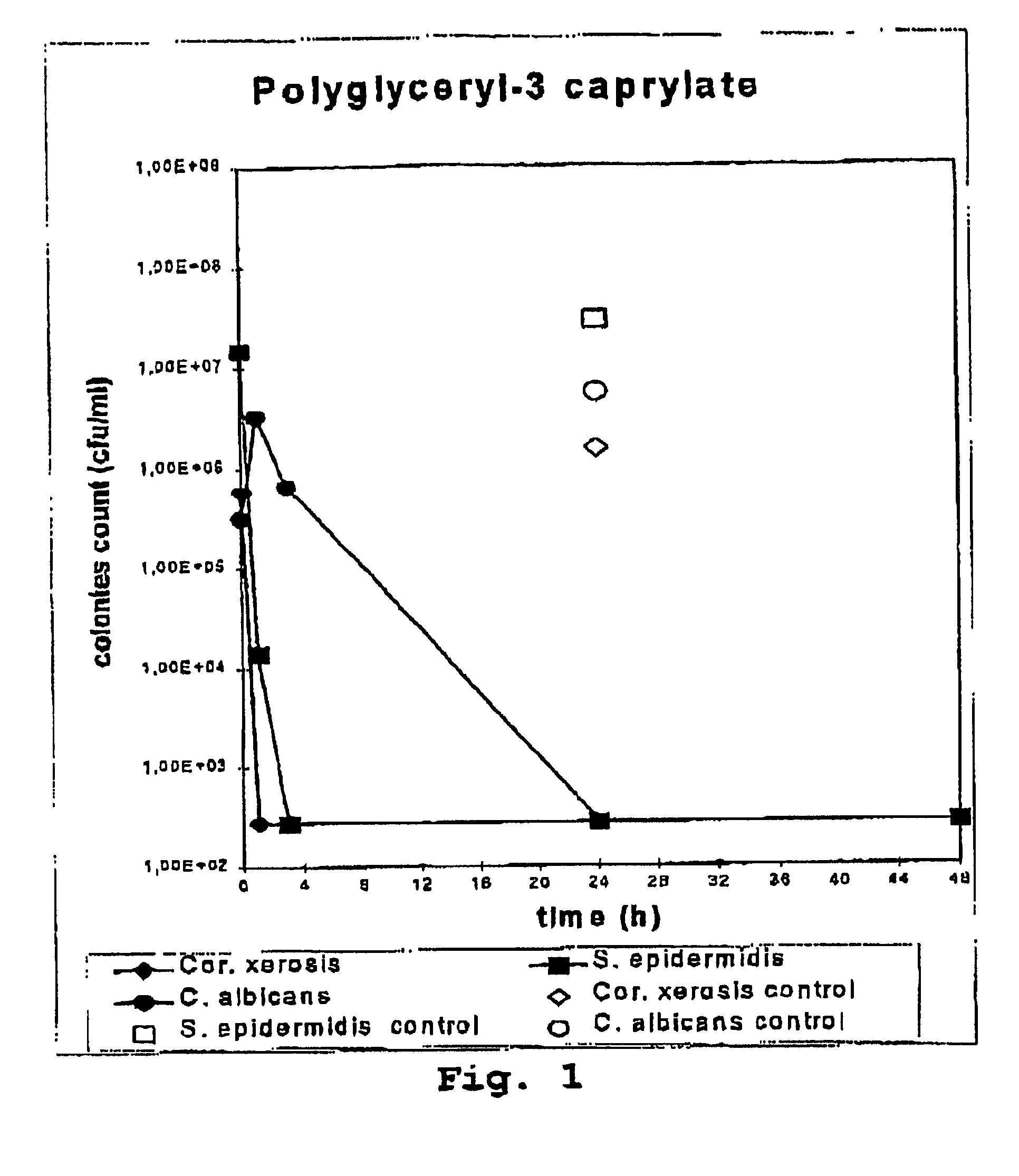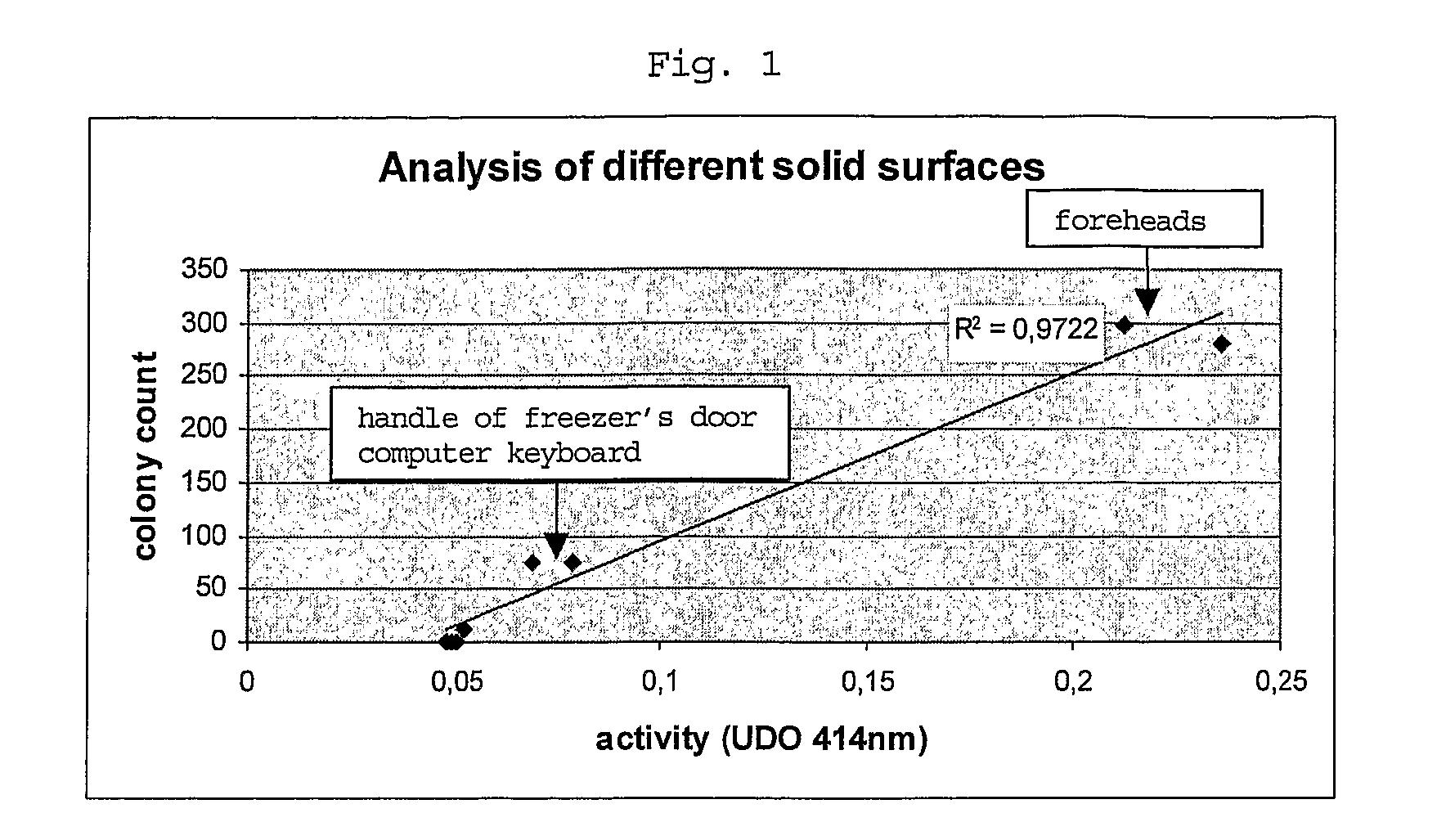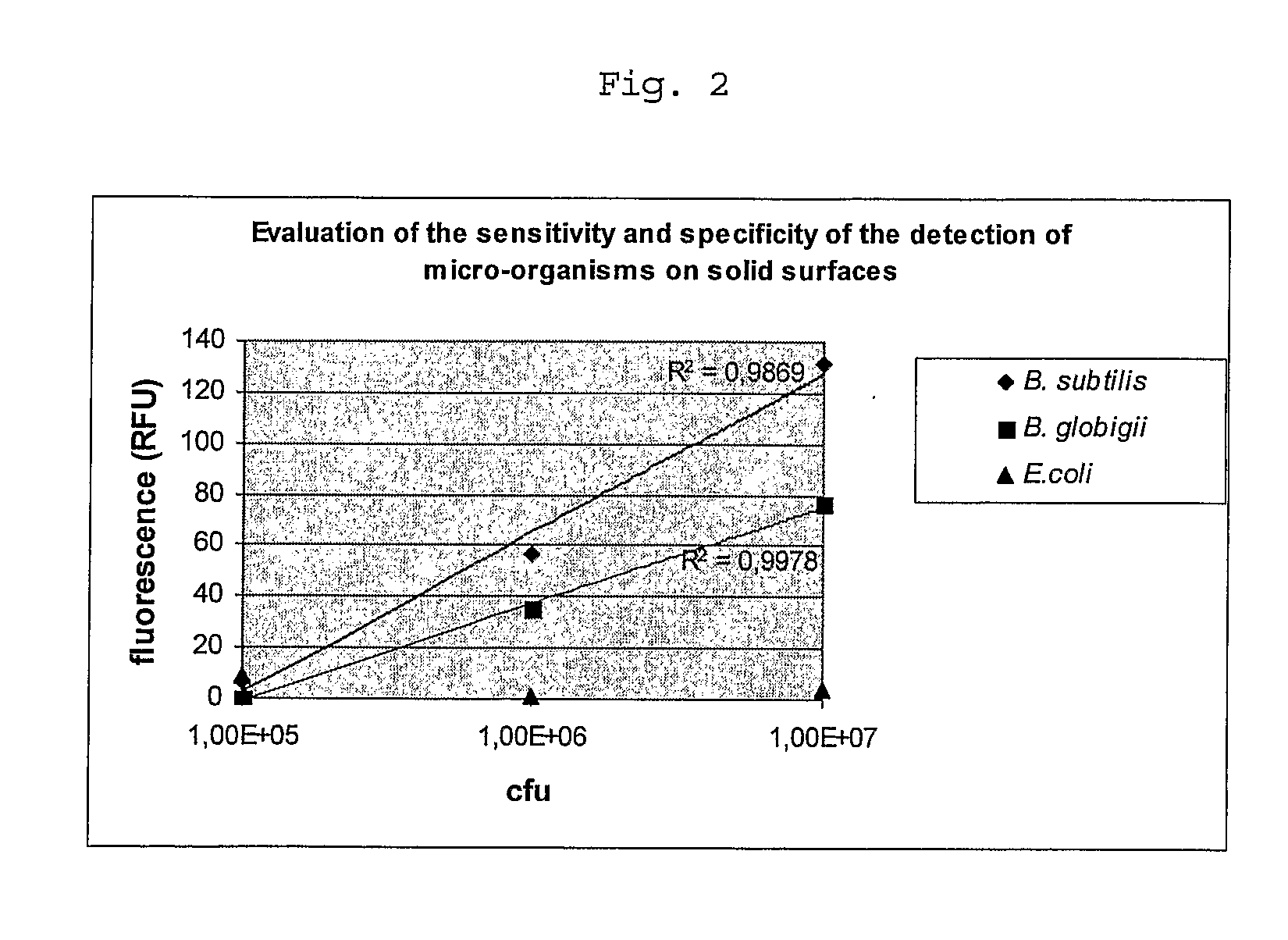Method and Test-Kit for the Detection and Quantification of Organisms
- Summary
- Abstract
- Description
- Claims
- Application Information
AI Technical Summary
Benefits of technology
Problems solved by technology
Method used
Image
Examples
example 1
Detection and / or Quantification of a Group of Organisms on Skin Surfaces
[0122] The skin surface contains lipids that are used by natural skin micro-organisms as energy sources for their growth, which means that these micro-organisms contain lipases or esterases as a shared enzymatic activity.
[0123] In this experiment, lipase / esterase activity was selected as the shared activity to detect and / or quantify the naturally occurring organisms on skin. The transformable substrate chose for the detection of said activity was the 2-hydroxy-4-p-nitrophenoxy-butyl decanoate.
[0124] Microorganisms were sampled directly on the skin using a swab impregnated with aqueous acetate buffer (0.1 M, pH 5.6) containing 0.1% w / v of Triton X100. The sampling surfaces were chosen to be approximately 10 cm2, on different skin surfaces such as forehead, armpit, scalp and arm. The time of sampling was approximately 1 minute.
[0125] After sampling, the swab was immersed in 200 μl of a 2-hydroxy-4-p-nitrophen...
example 2
Detection and / or Quantification of a Group of Organisms on Different Solid Surfaces.
[0130] In this example, the method of the invention has been used to detect and / or quantify a group of organisms on different surfaces. Such application is useful to determine if a surface contains viable cultivable or non cultivable organisms, for example in microbiological quality control in food or pharmaceutical industries, or in microbiological environment monitoring (e.g. the case of a bioterrorist attack), etc. As many micro-organisms contain esterases activity, the shared enzymatic activity selected for this example was the lipase / esterase one; and the transformable substrate for the detection of said activity was the 2-hydroxy-4-p-nitrophenoxy-butyl decanoate.
[0131] Swabs were beforehand impregnated with aqueous acetate buffer 0.1M pH5.6 containing 0.1% w / v of Triton X100. Samples were collected onto several solid surfaces using two swabs hold together. One of the two swabs has been analy...
example 3
Detection and / or Quantification of a Specific Group of Organisms by Means of a Shared Esterase Activity
[0138] In this example, the detection of two B. subtilis strains by means of their shared esterase activity was achieved in comparison of the detection of an E. coli strain. As the two B. subtilis strains share a common esterase activity, but not the E. coli strain, this application aims to demonstrate the feasibility of the detection of a specific group of organisms (B. subtilis) versus another one (E. coli) with the present method.
[0139] For this demonstration of the detection of specific groups of organisms by means of the method, cell preparations of three bacterial strains were realized by one overnight culture: [0140]Bacillus subtilis strain ATCC 12711 in DSM Medium 630: modified Thermus 162 medium at 30° C. [0141]Bacillus subtilis globigii in Bacto Nutrient Broth at 30° C. [0142]Escherichia coli strain MC1061 in LB medium at 37° C.
[0143] Correlation of cell counts with O...
PUM
 Login to View More
Login to View More Abstract
Description
Claims
Application Information
 Login to View More
Login to View More - R&D
- Intellectual Property
- Life Sciences
- Materials
- Tech Scout
- Unparalleled Data Quality
- Higher Quality Content
- 60% Fewer Hallucinations
Browse by: Latest US Patents, China's latest patents, Technical Efficacy Thesaurus, Application Domain, Technology Topic, Popular Technical Reports.
© 2025 PatSnap. All rights reserved.Legal|Privacy policy|Modern Slavery Act Transparency Statement|Sitemap|About US| Contact US: help@patsnap.com



